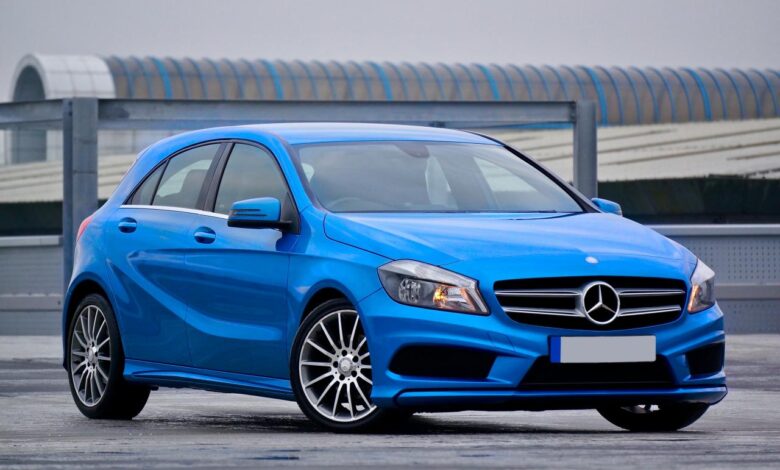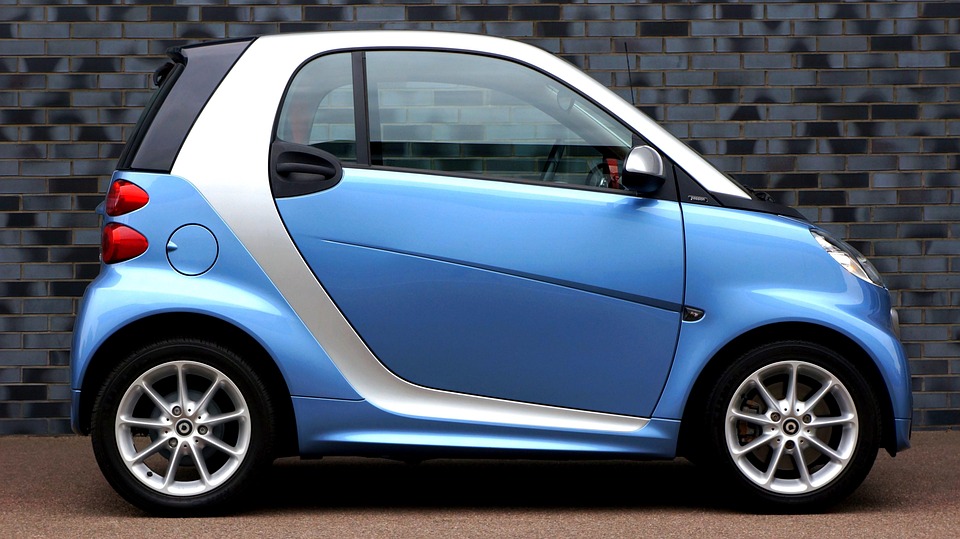Auto Insurance: Comprehensive Protection for Your Vehicle

The act of driving is an inherent part of modern daily life, representing freedom, convenience, and a necessity for work and family commitments. However, operating a vehicle, whether a compact sedan or a large SUV, carries inherent, unavoidable risks that extend far beyond the driver’s control. Even the most cautious driver can be involved in an unfortunate, costly accident caused by another party or an unpredictable event like a severe storm.
Automobile insurance is the essential, legally mandated financial mechanism designed specifically to address and mitigate these substantial risks. It provides a critical financial cushion, ensuring that a sudden accident or theft does not translate into an overwhelming financial disaster.
Securing the appropriate policy is not just a regulatory obligation; it is a fundamental pillar of responsible personal finance. A robust auto insurance plan safeguards not only your valuable physical asset, the vehicle itself, but also your entire financial future from potential lawsuits and catastrophic liability claims.
The Core Necessity of Auto Coverage
The fundamental purpose of auto insurance is to transfer the financial risk associated with driving from the individual to the insurance company. Without this crucial protection, an at-fault accident could force the driver to pay tens or even hundreds of thousands of dollars out of pocket. This immediate, unexpected expense could easily lead to personal bankruptcy. Insurance essentially converts an uncertain, potentially ruinous cost into a manageable, predictable premium. This regular payment provides the assurance that major losses will be covered.
Most jurisdictions legally require drivers to carry a minimum amount of coverage. This mandate exists to protect not only the driver but also other drivers and pedestrians. This requirement ensures that accident victims have a guaranteed source of funds for medical treatment and property repair. Operating a vehicle without this minimum level of protection is often illegal. It leaves the driver vulnerable to severe penalties and profound personal financial risk.
Beyond legal compliance, the right coverage ensures that necessary vehicle repairs or replacement can happen quickly. This rapid resolution is crucial for maintaining daily life and ensuring continuity of transportation. This is especially true for those who rely on their vehicle for employment. Auto insurance protects the driver’s lifestyle and mobility as much as it protects the car itself.
Decoding the Primary Coverage Types

Auto insurance policies are composed of several distinct types of coverage. Each component is designed to address a different aspect of risk. Understanding these components is essential to building a policy that truly protects your assets and satisfies legal requirements.
A. Liability Coverage
Liability coverage is arguably the most critical component of any auto policy. It covers the costs associated with accidents that are deemed to be your fault. This coverage is divided into two main categories. It is designed to protect third parties.
It pays for Bodily Injury Liability if you injure another person in an accident. This covers their medical expenses, lost wages, and pain and suffering. It also pays for Property Damage Liability if you damage another person’s vehicle or property. This includes hitting a mailbox, fence, or building. Most states require drivers to carry at least a minimum amount of this protection. High limits are strongly recommended to shield personal assets from lawsuits.
B. Collision Coverage
Collision coverage pays for damages to your own vehicle resulting from a crash. This includes accidents involving another car, a tree, a guardrail, or any other stationary object. This coverage applies regardless of who was at fault for the accident. It is a necessary protection for newer or more valuable vehicles. Collision coverage typically has a deductiblethat the insured must pay first.
C. Comprehensive Coverage
Comprehensive coverage pays for damages to your vehicle that are not caused by a collision. This includes a wide array of non-driving-related risks. Examples include theft, fire, vandalism, falling objects, and damage from extreme weather like hail or floods. This coverage also usually involves a deductible. It protects your investment from the many unpredictable hazards of the world.
D. Personal Injury Protection (PIP) or Medical Payments
Personal Injury Protection (PIP), or Medical Payments coverage in some states, covers medical expenses for you and your passengers after an accident. This coverage applies regardless of who was at fault for the collision. PIP can also cover lost wages and essential services in some jurisdictions. This is particularly important for residents in “no-fault” states.
E. Uninsured/Underinsured Motorist (UM/UIM)
This vital coverage protects you if you are hit by a driver who has no insurance or insufficient insurance. Uninsured Motorist (UM) coverage pays for your injuries and damages. Underinsured Motorist (UIM) coverage kicks in when the at-fault driver’s liability limits are too low to cover your full costs. Given the number of uninsured drivers on the road, this protection is extremely valuable.
The Details: Deductibles and Limits
Understanding how your coverage limits and deductibles interact is essential for managing your policy’s cost. These features are the primary determinants of your premium price. They define the precise financial agreement between you and the insurer.
Coverage limits are the maximum amounts the insurance company will pay for a covered loss. Liability limits are usually expressed as three numbers: for example, 100/300/100. This means $100,000 for bodily injury per person, $300,000 for total bodily injury per accident, and $100,000 for property damage per accident. Higher limits cost more but provide far superior financial protection for your personal assets.
A deductible is the out-of-pocket sum you agree to pay before Collision or Comprehensive coverage begins. If you choose a higher deductible, your monthly premium will be lower. However, you must be sure you have immediate funds available to cover that deductible after an accident. Choosing a deductible requires balancing savings and premium costs carefully.
Many insurers offer a vanishing deductible program as an option. This program reduces or eliminates your deductible over time if you maintain a good driving record. It is a reward system for safe drivers. This feature adds long-term value to the policy.
Factors That Determine Your Premium Cost
Insurance companies utilize complex algorithms to calculate your individual premium. This calculation is based on an assessment of the probability that you will file a claim. Many factors, some within your control and some not, influence this final price.
F. Driving Record
Your driving record is perhaps the most significant factor affecting your premium. Tickets for moving violations, such as speeding, increase your perceived risk. At-fault accidents drive the cost up even more dramatically. Maintaining a clean driving history is the single best way to secure the lowest rates.
G. Vehicle Type
The make, model, and year of your car directly impact the price. Expensive, high-performance, or luxury vehicles cost more to insure because they are more expensive to repair or replace. Vehicles with high theft rates also carry higher premiums. Conversely, cars with good safety ratings often qualify for discounts.
H. Location (Zip Code)
The area where you live and park your car significantly affects the rate. Urban areas with higher traffic density and elevated rates of theft or vandalism have higher premiums. Moving from a busy city to a quiet suburb often results in a noticeable reduction in insurance costs. The local risk environment is factored in heavily.
I. Age and Experience
Young, inexperienced drivers, particularly teenagers, have statistically higher accident rates. As a result, they face the highest insurance premiums. Rates typically decrease significantly as drivers move through their 20s and establish a safe driving history. Mature drivers often enjoy the lowest rates overall.
J. Credit History
In many states, the applicant’s credit-based insurance score is a factor in determining the premium. Studies suggest a correlation between a person’s financial stability and their likelihood of filing a claim. Maintaining a strong credit history can directly lead to lower insurance costs.
K. Annual Mileage
The more time you spend on the road, the higher your exposure to risk. Insurers ask for an estimate of your annual mileage. Those who drive fewer miles often qualify for lower premiums. Commuters who drive long distances face higher rates than those who primarily work from home.
Optional Coverage and Policy Riders

Beyond the core mandatory coverages, insurance companies offer a variety of optional policy add-ons. These riders provide specialized protection tailored to the unique needs of the driver and the vehicle. They enhance the basic policy significantly.
L. Rental Reimbursement
This coverage pays for the cost of a rental car while your own vehicle is being repaired after a covered accident. Without this rider, you would have to pay for the temporary transportation yourself. This is an extremely valuable feature for people who cannot be without a car. It ensures continuity of mobility during a time of disruption.
M. Roadside Assistance
This popular rider provides essential emergency services if your vehicle breaks down. It covers services like towing, jump-starting a dead battery, and changing a flat tire. It is a highly convenient add-on that provides peace of mind during unexpected roadside incidents. The cost is usually nominal compared to the value received.
N. Gap Insurance
Gap insurance is vital for drivers who finance or lease a brand-new vehicle. New cars depreciate rapidly the moment they are driven off the lot. If the car is totaled early on, the insurance payout (Actual Cash Value) might be less than the amount still owed on the loan. Gap insurance covers this crucial difference between the loan balance and the car’s actual value.
O. Custom Equipment Coverage
If you have invested in aftermarket upgrades like custom wheels, a high-end sound system, or unique paint, standard policies may not cover their full value. This specific rider ensures that all non-factory installed custom equipment is properly insured. It protects the full investment in personalized vehicle modifications.
Cost-Saving Strategies and Discounts
Insurance premiums are a constant monthly expense, and every driver seeks ways to reduce this cost without compromising essential coverage. Insurance companies offer numerous discounts that savvy consumers can take advantage of easily. Asking about discounts is always a smart move.
Bundle your policies by insuring your car, home, and other assets with the same company. This is one of the most effective and easiest ways to secure a substantial discount. Insurers reward loyalty with lower rates across the board.
Maintain excellent academic performance if you have student drivers on your policy. Many companies offer a “Good Student Discount” for those maintaining a high GPA. This is a recognition that responsible students tend to be responsible drivers.
Complete a defensive driving course approved by the insurer. Many states and companies offer a discount for taking these short refresher courses. This training may also help reduce penalty points on your license. It is a proactive step toward safer driving habits.
Consider installing a telematics device or using an insurance company app. These devices monitor your actual driving habits, such as braking, speed, and mileage. Safe drivers are rewarded with lower rates through these programs. This provides personalized, behavior-based pricing.
Finally, consider increasing your deductibles on Collision and Comprehensive coverage. If you are financially stable enough to cover a higher out-of-pocket amount, raising the deductible lowers the premium significantly. This is a calculated risk that often pays off.
Conclusion
Auto insurance is a necessary, foundational component of managing the inherent risks of driving today.
It fundamentally protects your personal assets and shields you from the potentially devastating costs of a major liability claim.
The policy is structured with core components like Collision and Liability, each serving a distinct protective function.
High-quality coverage must include robust Uninsured/Underinsured Motorist protection due to the sheer number of uninsured drivers.
Your premium cost is calculated based on several factors, including your vehicle type, location, and crucially, your driving record.
Maintaining a clean driving history is the most effective long-term strategy for achieving the lowest possible rates.
Optional riders, like Rental Reimbursement and Gap Insurance, ensure your daily life remains uninterrupted after an accident.
Smart consumers actively seek out and utilize multi-policy, good-student, and vehicle safety discounts to lower their monthly costs.
Understanding the policy’s limits and deductibles is essential for preparing your finances for the immediate aftermath of a crash.
The protection provided ensures that crucial repair and medical decisions are made based on need, not immediate financial ability.
Adequate auto coverage is the ultimate guarantor of continued mobility and long-term personal financial security.
This policy is truly the essential safeguard that keeps your life running smoothly, even when the unexpected occurs.


